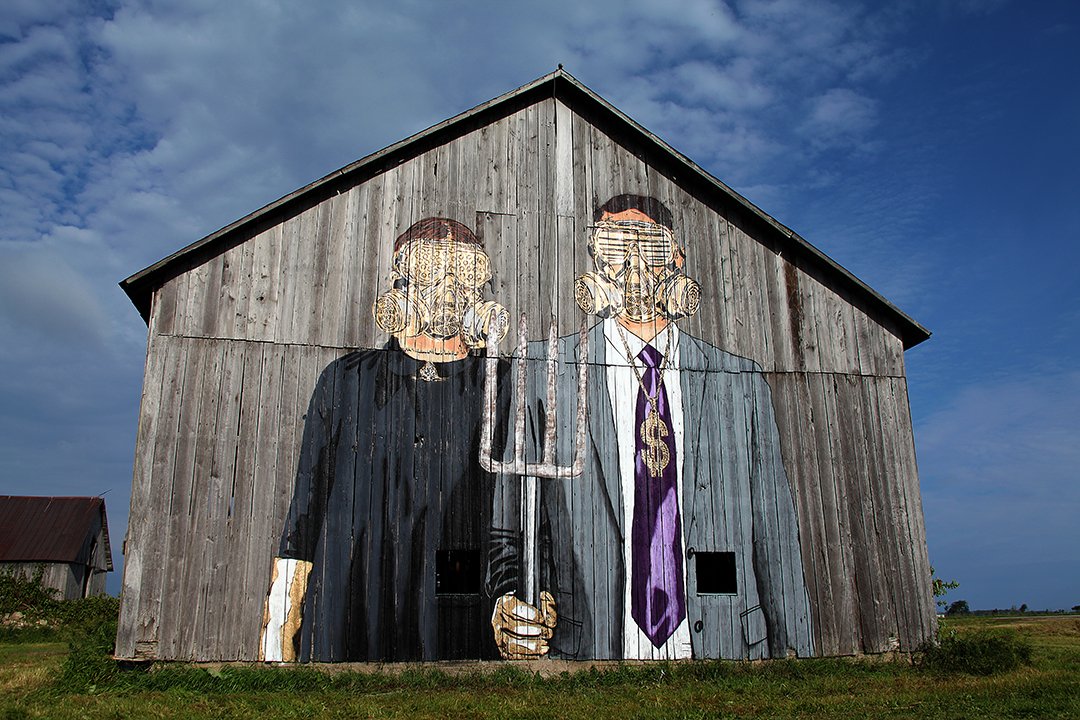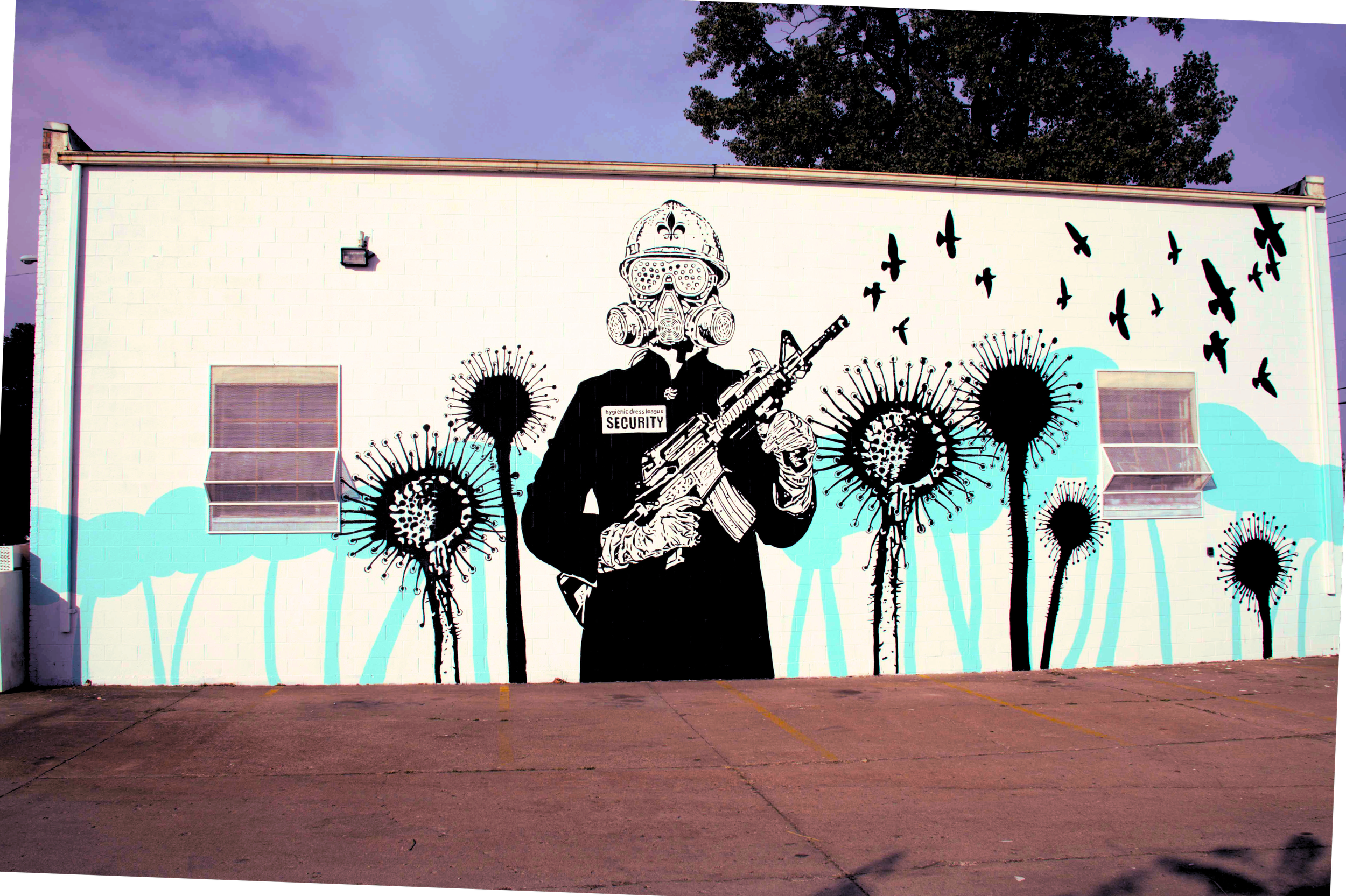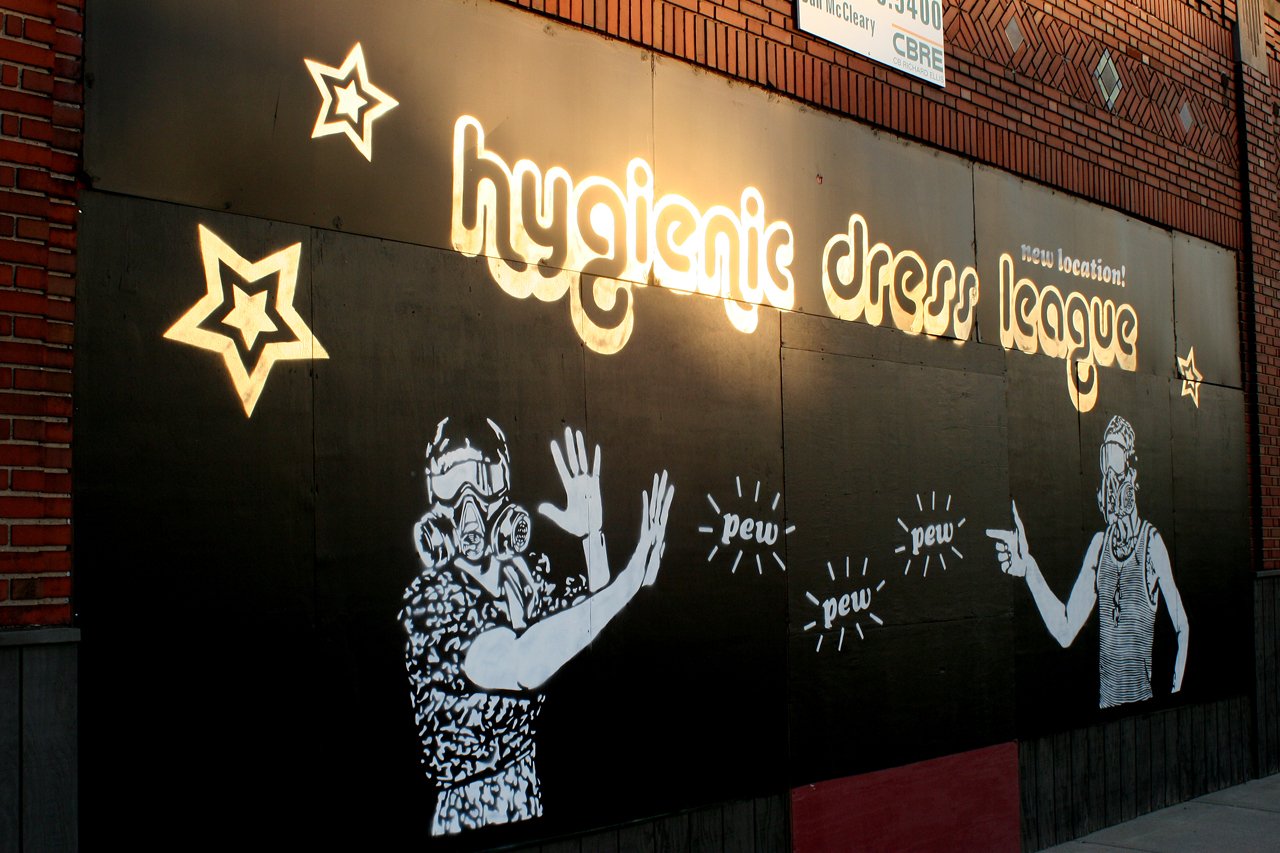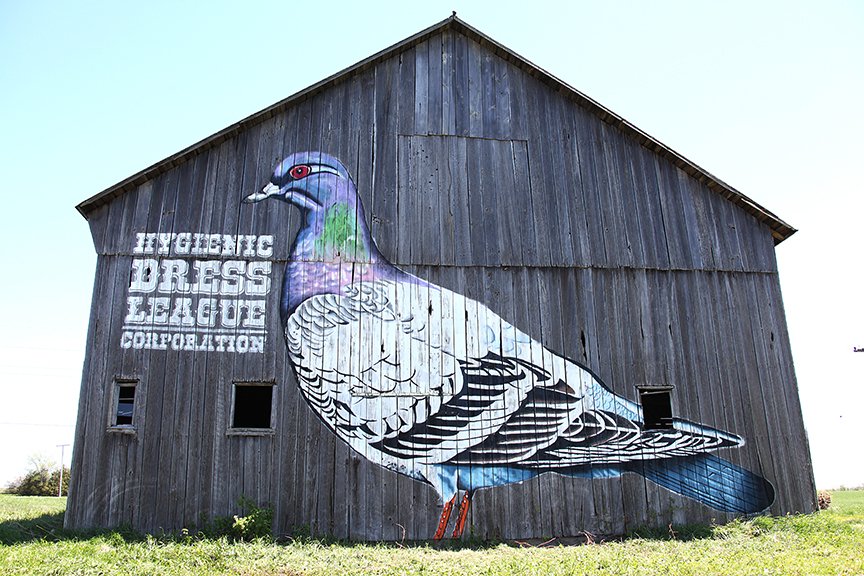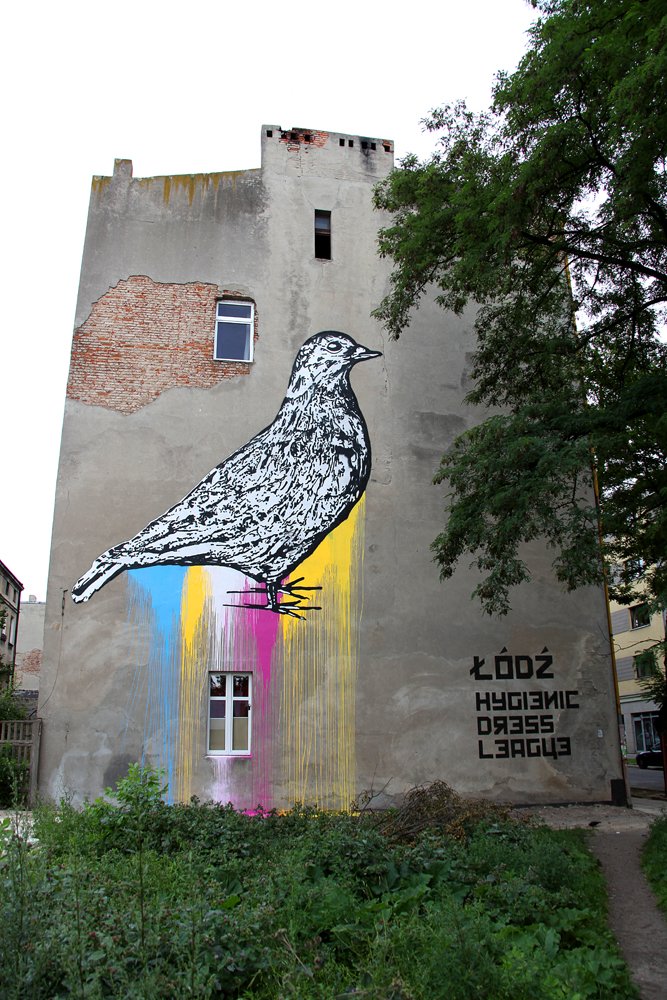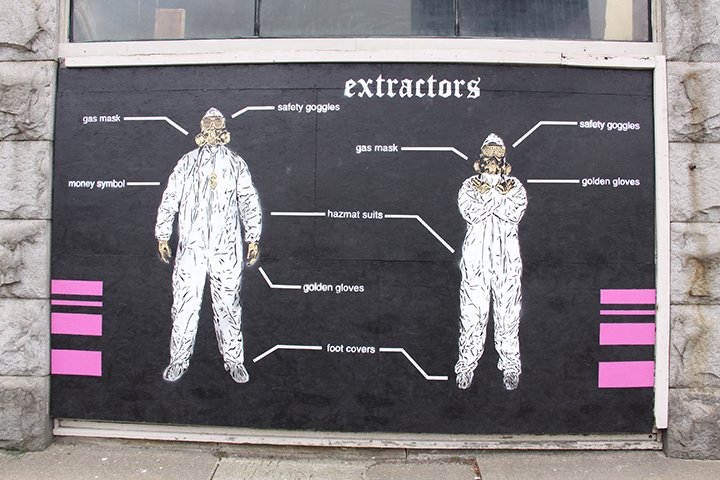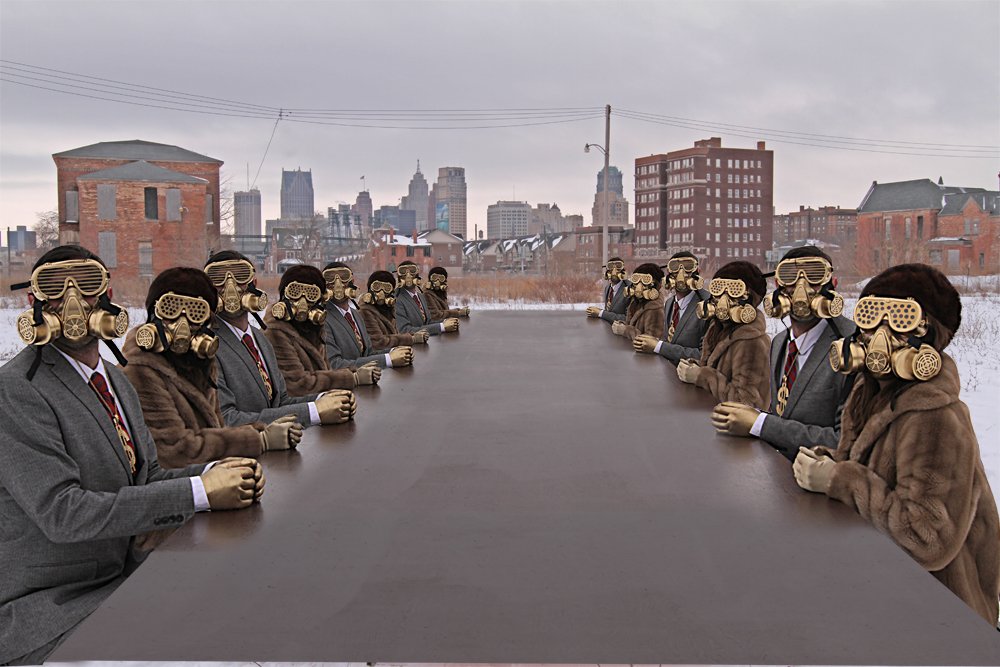The Hygienic Dress League
In 2007, artists Steve and Dorota Coy returned to Detroit and began transforming the city's landscape with their provocative street art collective, Hygienic Dress League (HDL). Known for their distinctive imagery of gas-masked figures and pigeons, HDL's work stands at the intersection of corporate commentary and public art. Their installations challenge viewers to question the commercialization of art while contributing to Detroit's flourishing street art renaissance. In this interview, originally featured on Freshwounds and conducted by Colin Darke, the artistic duo discusses their unique approach to street art, Detroit's evolving creative scene, and their mission to reward the curious with an unfolding narrative throughout the city.Colin Darke: Why create Street Art?
The Hygienic Dress League:
Street art, at the moment, seems to be the most democratic and inclusive art movement as anyone can participate with very low barriers. Street art gets in your face, it forces discussion, and causes controversy at times–all of which is positive and necessary in a progressing society. We are drawn to it in particular as it is one of the rawest, and in most cases, an un-curated forms of art that anyone can participate in, as the institutional art world often falls victim to commodification, elitism, censorship, and exclusivity.
Colin Darke: What is Detroit's street art scene like?
The Hygienic Dress League:
It always has been and continues to be a place of flourishing creativity. Places of hardship often give rise to creativity and innovation out of necessity and inspiration to become better or solve problems. In most cases people help each other, feed off each other’s creativity and embrace what makes Detroit so interesting. We do have a current dialogue that, I believe, is present in a lot of other places which is the idea of local versus global. Some artists have declared a “No fly zone.” As a travelling artist, I think it is important to have a balance of both. Some organizations only support outside artists. I think we need to find a balance of promoting locals and accepting those who come in. it is important that local artists are supported but I also do not believe we should have a closed door policy. Allowing artists to come in promotes a healthy conversation and diversifies the work
“–You con the art world and then the world cons you.”
〰️
“–You con the art world and then the world cons you.” 〰️
Colin Darke: How has Detroit's art scene / street art scene changed over the past five years?
The Hygienic Dress League:
As the popularity of street art grows worldwide–Detroit’s street art scene broadens as well. Pre–2007 I did not see too much work in the form of street art, it was all mostly graffiti. Street art is quickly becoming a popular and accepted form of art and what was once a counterculture is quickly shifting into pop-culture. We have large corporations now supporting street artists and murals in the city.–You con the art world and then the world cons you. What was once a pure form of art and bringing freedom of expression open to the public, actually forced into the public, but you now have works being stolen and put up on auction and sold. The HDL is the corporation; we have already jumped ahead to the commercial world.
Colin Darke: Is the Detroit community receptive?
The Hygienic Dress League:
There is always a contingency of people anywhere that are adverse to change. In Detroit, however, I have found an amazing number of people who really appreciate the effort of street artists to make their city more unique. One of my favorite parts of working on the street is the dialogue I get to have with people passing by. In most cases people are excited to see images being made and are excited to talk with the creator about the work and its meaning.
Colin Darke: What do you hope viewers take away from your work?
The Hygienic Dress League:
We hope they view it with a sense of curiosity; we want them to wonder what it is about. We want to reward the curious–as if leaving a trail of breadcrumbs until they start to become fascinated with the unfolding narrative. We hope to continue to find new ways to create public work that surprises people.
